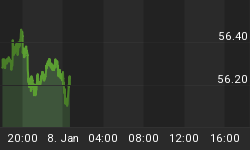Bloomberg just cited some stats that validate the average American's sense of being ripped off:
Here's How Much QE Helped Wall Street Steamroll Main Street
Wall Street is counting its winnings from seven years of easy money.
In a report sent to clients on Sunday, Bank of America Corp. strategists totted up the results of 606 global interest-rate cuts since the collapse of Lehman Brothers Holdings Inc. and the $12.4 trillion of central bank asset purchases following the rescue of Bear Stearns Cos.
The results represent a clear victory for Wall Street over Main Street, according to the team of Michael Hartnett, BofA's chief investment strategist.
For every job created in the U.S. this decade, companies spent $296,000 buying back their stocks, according to the New York-based bank.
An investment of $100 in a portfolio of stocks and bonds since the Federal Reserve began quantitative easing would now be worth $205. Over the same time, a wage of $100 has risen to just $114.
For every $100 U.S. venture capital and private equity funds raised at the start of 2010, they are now raising $275, but for every $100 of U.S. mortgage credit extended five years ago, just $61 was extended and accepted this June, BofA said.
'Deflationary Expansion'
Meantime, prime commercial real estates gained 168 percent, compared to a 16 percent increase of all U.S. residential property. In the U.K., London accounted for 26 percent of the value of all housing sales last year even though it accounts for just 1 percent of the land.
Such experiences have Hartnett and colleagues continuing to predict "deflationary expansion' in the world economy in the form of a slow, jerky transition to higher growth rates led by the U.S.
"Zero rates and asset purchases of central banks have, thus far, proved much more favorable to Wall Street, capitalists, shadow banks, 'unicorns,' and so on than it has for Main Street, workers, savers, banks and the jobs market,' the BofA team wrote.
The risk is that the bull markets driven by central banks swoon if further central bank monetary easing from outside the U.S. forces the dollar up and commodities down rather than spurs demand, they said.
"The 'Wall Street boom, Main Street bust' narrative is one central banks would very much like to avoid in 2016,' they said. "The markets have not priced in quantitative failure.'
The reason that companies now prefer buying back stock to hiring new workers is, in a word, uncertainty. When a society borrows too much money it becomes unstable. Governments don't want to make choices that lead to pain, but until the debt is worked off, those are the only available options. So they dither, and outsiders vie for power, and it becomes vastly harder for those charged with allocating corporate capital to envision the state of the world during the lifetime of a new factory. If you can't predict conditions, you can't predict cash flow. And if you can't predict cash flow, you have no idea whether a given piece of new capacity will generate a profit.
With share buybacks, on the other hand, you know exactly what will happen. You'll save a definite amount on dividend payments and your stock (and year-end bonus) will be a little stronger than would otherwise be the case. Ditto for moving into a sparkling new office building: You get something you can enjoy in the moment, whereas that new factory won't be fun to own and might cause you or your successors nothing but heartache. So the bird in hand becomes the logical choice.
The problem with this process is that it's self-reinforcing. A factory not built generates no future profits and pays no corporate taxes. A worker not hired spends less, pays less in taxes and requires more help. The government goes more deeply in debt and the system becomes that much less stable.
The cycle ends only when debt falls to manageable levels. And right now all trends point the other way.
















